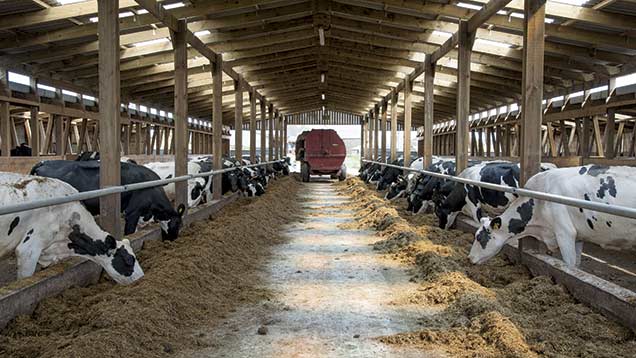Dairy survival: 4 key action areas for farmers
 ©FLPA/Rex
©FLPA/Rex Clear communication within farming families, as well as with banks and suppliers, will be crucial to surviving the milk price slump, say advisers.
David Keiley, senior dairy specialist with SAC Consulting, said communication often suffered when businesses and individuals were under pressure but family members and partners in dairy businesses needed to talk and determine their appetite for 18 months of very difficult trading conditions.
“Successors should be considered in this discussion,” he said. “Future commitment and the determination to make things work and hold on for a better milk price are critical.
“Businesses are likely to increase debt burdens while milk prices are low. Do the existing and future managing partners want to carry a greater level of borrowing?”
Early talks with banks, suppliers and tax authorities should also be part of the plan, said Mr Keiley.
Accountants may advise tax savings through reducing payments on account and farmers’ averaging.
There were four important areas where action should be taken:
1. Banking
Broadly, lenders will support farming but will want more detailed information – not only well-considered cashflow forecasts and budgets but probably also a real-time balance sheet and details of creditors and debtors.
“The easier you can make their job, the more likely you are to be supported,” said Mr Keiley.
Capital holidays on loans, making interest only payments and restructuring borrowing should be explored – but producers needed to understand fees, charges and the long-term impact of any changes.
2. Business planning
Too many farmers were still relying on gross margin costings, said Mr Keiley. He estimated that 60-70% of milk producers either did not calculate cost of production a litre at all or did not cost it properly, typically failing to account for partnership drawings, unpaid family labour, reinvestment requirements or capital repayments.
Clear cashflow forecasts and budgets were needed, with realistic assumptions and sensitivity, said Mr Keiley. Lower milk prices should be tested including the impact of a further 1.5p/litre cut, he suggested.
“Monitor actual performance against budget on a monthly basis and work on the weak areas of financial slippage, and focus on analysing costs carefully.”
Potential areas of weakness include feed costs, machinery repairs and contracting costs, cull rates and forage quality.
Tax bills due in January and June related to a better previous year’s performance and would also challenge many businesses, said Mr Keiley, who suggested that HMRC might consider phased payments.
Having up-to-the-minute cashflows and budgets would help not only the current position but also allowed testing of how things might look with a change of policy, added Sam Kelly of Kelly Farm Consulting. “For example, should you be holding on to that group of youngstock or should they be sold now to alleviate cashflow?
“Cows with repeat mastitis need to be looked at carefully – how much milk are they actually putting in the tank and what is their drug cost? If their average saleable milk does not meet breakeven yield, they are a passenger. “
3. Business creditors
Creditors needed to be managed to maintain trading relationships, said Mr Keiley. “If creditors face delayed payment, then part-payment of accounts will be better than deferring payment totally.
“Contractors, vets and feed companies would all rather have some money on regular basis. Look to settle the accounts with the highest interest rate charges first.
4. Feed
“The feed market is competitive, however starch is beginning to rise again,” he said. “Question each pallet of feed additives. Are they enhancing performance?”
